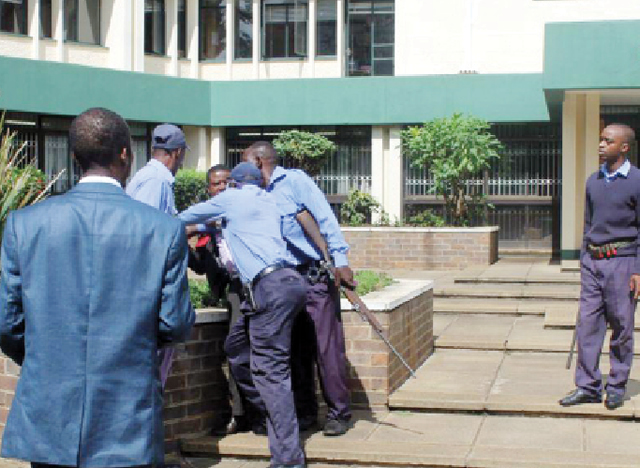Distracted driving major cause of road carnages
Tatenda Chinoda
The most important gain from all road safety messages would be a positive driver behaviour change that is likely to lead to a reduction in road traffic accidents, deaths and injuries. The tragedy with death is not that things are broken but the broken things cannot be resurrected!
According to Anderson (2012), statistics prove that 97 percent of all road traffic collisions are a direct result of driver error. Some prefer to refer to the driver error as ‘human error’. If this is the case, it implies that the 97 percent accidents caused by driver error can be prevented when drivers correct these errors. In this article, I am focusing on a very high risk driving behaviour (error) -‘Distracted
Driving’. Distracted driving, a subset of driver inattention, can be generally expressed as doing other activities which take the driver’s attention away from the road and traffic.
There are three types of distractions that may occur while driving namely: visual; manual; and cognitive distractions.
Visual distraction means literally taking one’s eyes off the road and traffic. Manual distraction means taking one’s hands off the steering. Cognitive distraction means taking one’s mind off from the basic task of driving.
Driving is a skill that requires the driver’s full attention to safely control the vehicle and respond to events happening on the road around the driver’s lane. It involves constant and complex coordination between the driver’s mind and body.
In towns, cities and along highways, distracted driving cannot be ruled out. Eating, reading, other occupants in the car, cell-phone use, drinking, smoking, adjusting radio, adjusting environmental control, reaching for an object in the car, grooming (applying make-up), meditation and looking or admiring an object or event outside the vehicle are some of the examples of distractions.
Indeed, looks can kill. Looking at what you are passing while you are driving is called rubbernecking. This can be a distraction if you are concentrating on getting a good look at say, an accident, a dazzlingly dressed lady or gentleman, a vehicle pulled over by traffic police, a construction work, a billboard advertisement, a scenic view, street name and addresses.
Sometimes the driver’s mind is off the driving job. His or her attention won’t be on the outer world – the world of the vehicle, the driving, the road and the traffic situations obtaining. This means that the driver’s attention will be focused on his inner world – the world of troubles. Even if the driver’s eyes would be wide open, he or she might not be seeing and reading the road ahead, the road behind and the road at the sides.
This state of mind that is sometimes referred to as highway hypnosis (sleeping at the wheel) is very dangerous when driving.
This possibly explains why some drivers appear like they involuntarily drive onto crossing trains at rail – road level crossings in broad daylight. Therefore, emotional and spiritual instability are other salient forms of driver cognitive distractions which must be avoided.
There are six conditions which when unfavourable can cause road traffic crashes.
These are road, light, vehicle, weather, traffic and driver conditions. Research shows that the driver condition is the greatest contributor of these road crashes.
While the road condition cannot be changed overnight, the attitude of the driver can. There are road traffic laws. New laws can be enacted and enforced accordingly.
However, these road signs, signals and markings do not carry out any action. For example a stop sign does not stop a car. It is the driver who stops the car at a stop sign. Unfortunately, some negligent drivers do not stop at a stop sign.
It is this negligent behaviour, this coarse attitude by some drivers that we hope to appeal against through continuous driver improvement programmes and education. Education is the best way to reduce ignorance and influence people to follow the right path willingly.
The opposite of ‘distracted driving’, in my own words, is ‘concentrated driving’.
According to the ZRP Driving School Road Craft Manual and the system of car control, concentration is the full application of mind and body to a particular endeavour, to the complete exclusion of everything else not related to that endeavour.
This is precisely what the driver should do – concentrate on driving from point A to point B. No matter what rank of office one has, one must concentrate on driving whenever at the wheel.
During parties (wedding, birthday and graduation) those passengers in euphoria who thrust their heads out through the windows and wave their hands while the vehicle is in motion distract the driver.
About the writer: Tatenda Chinoda is a Traffic Safety Officer – Marketing, road safety educator and seasoned defensive driving instructor. He can be contacted on [email protected] or [email protected]. Cell: 0772 966 075 or phone 04–751208.










Comments